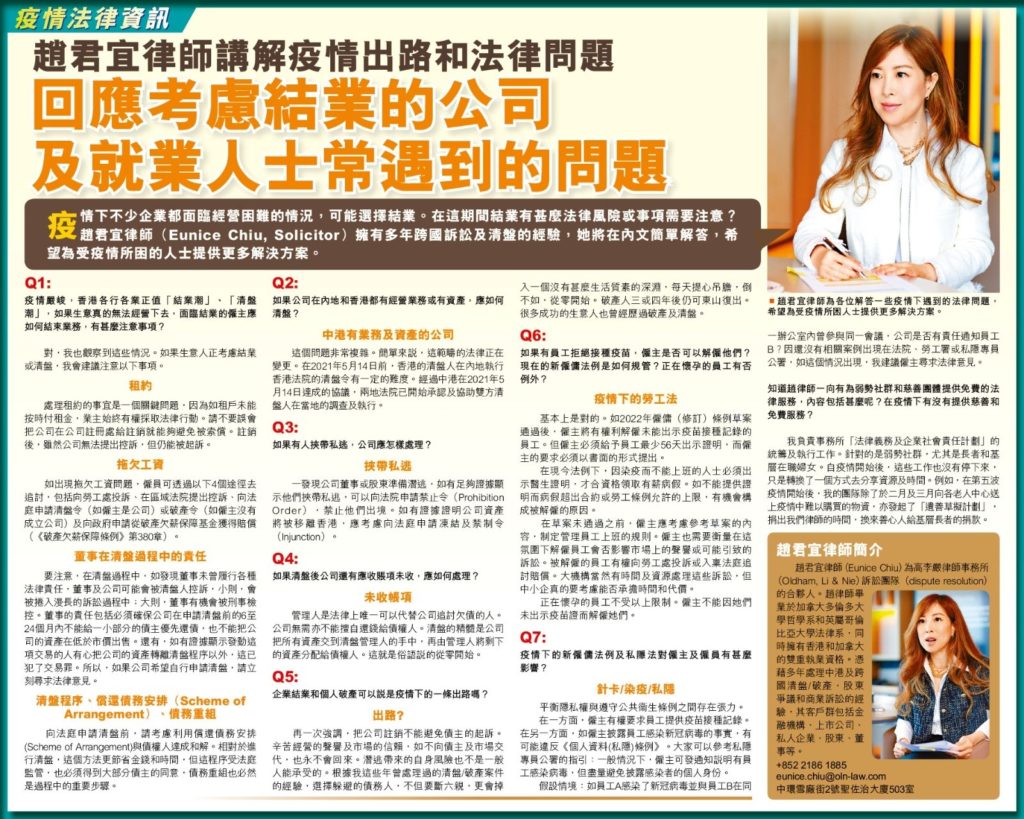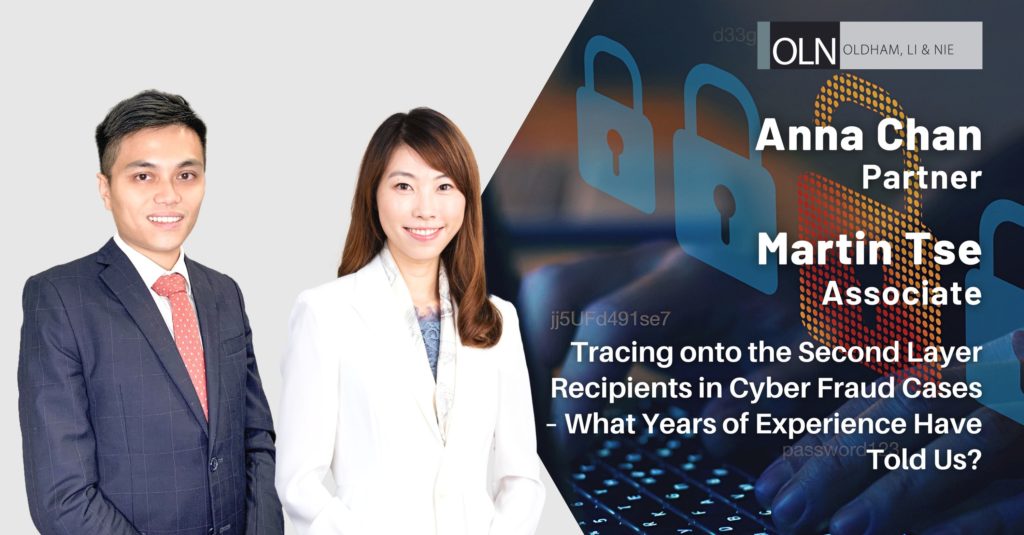If you are the plaintiff who has been defrauded within the underground banking system, think twice before applying for summary judgment where the defence of bona fide purchaser for value without notice has been pleaded.
Author: Eunice Chiu of OLN, Solicitor for the 8th Defendant
This is a short update on underground banking. Monies transferred through underground banking into Hong Kong may escape detection until they are mixed with funds obtained by fraud, and the defrauded party attempts to recover the defrauded funds by suing:
(a) the suspected fraudster (who will have usually disappeared by the time legal action is commenced), together with;
(b) other recipients who did not participate in the fraud but whose money arrived in the very same bank account which held the funds obtained by fraud.
It is generally when such a lawsuit is commenced (sometimes via an application for an injunction or the police issuing a letter of no consent which freezes the account) that innocent recipients come to realize that the fund senders had conducted the transfers using the underground banking system.
In April 2021, I wrote about how money transfers conducted through the underground banking system into Hong Kong may no longer be enforceable even if the recipient in question did not participate in the fraud or did not know that underground banking would be used to transfer funds to him/her. Between 2017 to 2021, the High Court decided in a number of cases that the use of underground banking, being illegal under PRC law though not illegal under HK law, violated the public policy of HK and therefore funds transferred in this manner are subject to being returned to the defrauded plaintiff: https://oln-law.com/underground-banking-in-hong-kong-ndash-can-a-payee-rsquo-s-finances-be-frozen/; https://www.lexology.com/24462/author/Eunice_Chiu/).
However, in none of the cases decided based on the foreign illegality/public policy ground did the court make a factual finding that the recipient defendant knew, should have known or should have reasonably suspected that the money would be transferred using illegal means, i.e. the recipient defendant was a bona fide purchaser for value without knowledge who merely played a passive role. The question I then asked was, what if the recipient was such a purchaser?
In last Thursday’s decision handed down by Deputy High Court Judge Victor Dawes SC in Lesnina H. D.O.O. v Wave Shipping et all (HCA 154/2020), not only did the Plaintiff fail to obtain summary judgment against our client, the 8th Defendant, the court also rejected the absolute approach used in previous cases including DBS Bank (Hong Kong) Limited v Pan Jing [2020] 4 HKC 395 (24 January 2020) as the correct or the only approach to be applied. Instead, the court spent a significant part of the judgment reviewing an alternative and more flexible approach represented by various authorities including Ryder Industries Limited (formerly Saitek Limited) v Chan Shui Woo [2015] 18 HKCFAR 546: Not every breach of foreign law makes a contract unenforceable; consideration must be given to the seriousness of the foreign illegality, i.e. there is a de minimis threshold. The court went on to reject the Plaintiff’s application for summary judgment on the basis that the illegality argument raised by the Plaintiff involves triable legal issues which ought to be fully ventilated at trial, not at the summary judgment stage, then granted the 8th Defendant unconditional leave to defend. In essence, the court rejected the absolute approach that has been in place since Pan Jing which was sufficient to grant judgment in favour of the Plaintiff even at the summary judgment stage – illegality renders a contract void and unenforceable full stop, both at the summary judgment and trial stages.
Arguably, Dawes J went further than just deciding that there is an alternative legal approach that makes it inappropriate at the stage of a summary judgment application to grant judgment in favour of the Plaintiff where foreign illegality is triggered. At paragraph 57 of the judgment, he made it abundantly clear that he did not disagree with the heavy criticism of the absolute approach:
There is much to be said for the suggestion that Laddie J’s approach in Barros Mattos involved an overly blunt application of the maxim ex turpi causa non oritur action, and a preferable approach would be one that measures the gravity of the defendant’s criminal conduct against the impact of allowing the defence of change of position, and in my view the point applies to the bona fide purchaser defence as much as it does to the change of position defence [emphasis added]
Based on Dawes J’s latest judgment, in conjunction with that of Deputy High Court Judge Le Pichon in Solyda SRL v Wu Ge (HCA 1612/2019), [2021] HKCFI 1825 at para 24 who decided that the issue of the bona fides of the defendant was indeed relevant, I would see things in this way: At present, foreign illegality does not automatically render a transaction conducted via underground banking unenforceable, certainly not at the summary judgment stage, whilst 2 defences remain available to passive recipients: the de minimis threshold argument and the bona fide purchaser for value without knowledge defence.
 香港中環雪厰街二號聖佐治大廈五樓503室
香港中環雪厰街二號聖佐治大廈五樓503室 +852 2868 0696
+852 2868 0696










